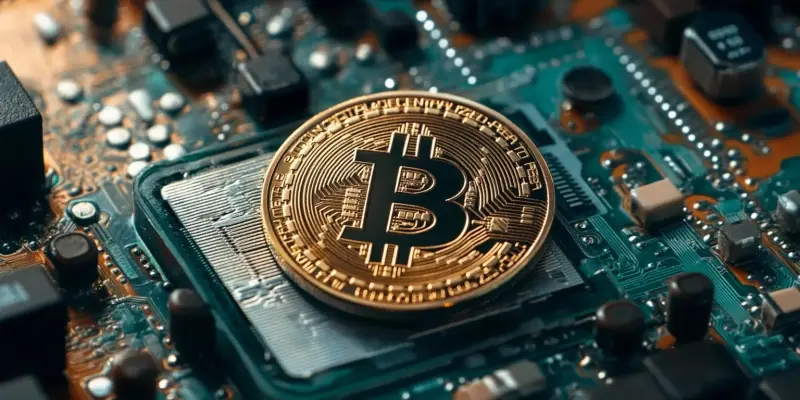In an age where convenience and speed in payment methods are crucial for retail success, Flexa’s innovative Tap to Pay feature may well be the transformative leap in cryptocurrency usability that consumers and merchants have been waiting for. This groundbreaking technology enables in-person cryptocurrency transactions without the need for mobile phones or internet connections, utilizing NFC-enabled hardware wallets. As a first in the digital currency acceptance platform space, it heralds a new era where direct blockchain payments can be executed through contactless technology, potentially reshaping how we interact with digital assets in everyday retail environments.
With the introduction of Tap to Pay, Flexa has streamlined the crypto payment process, making it more comparable to traditional payment methods like contactless credit and debit cards. This feature is initially compatible with hardware wallets like Burner, which allows users to sign and transmit payments directly at the point-of-sale. By entering their PIN on a Flexa-enabled device and tapping their Burner card, users can authorize transactions on the blockchain with the same ease as tapping a credit card. This innovation not only simplifies the transaction process but also enhances security through the decentralized nature of cryptocurrencies, thereby addressing one of the main concerns consumers have regarding digital payments.
Enhancing User Experience and Security
The key to Flexa’s Tap to Pay feature lies in its ability to enhance both user experience and security significantly. Traditional cryptocurrency payment methods often require scanning QR codes, managing online wallets, or navigating through apps, all of which can be tedious and time-consuming. Flexa’s Tap to Pay eliminates these cumbersome steps, offering a frictionless and swift checkout experience, akin to using a contactless card. This streamlined process is bound to attract users who might have been hesitant to adopt cryptocurrency due to its perceived complexity and potential for error during transactions.
From a security perspective, the use of NFC-enabled hardware wallets presents a compelling advantage. Unlike mobile wallets that depend on internet connectivity, hardware wallets offer an added layer of security by being physically separated from the web, reducing vulnerability to cyber-attacks. The PIN authentication step on Flexa-enabled point-of-sale devices further ensures that transactions are secure and legitimate. This dual layer of security—both decentralized and hardware-based—addresses growing concerns about digital payment security and offers users peace of mind when making cryptocurrency transactions.
Expanding Merchant and Consumer Adoption
The initial rollout of Flexa’s Tap to Pay feature targets specific hardware wallets and merchants using Flexa’s Point of Sale app, available for both iPhone and Android devices. This method of incremental introduction allows for a controlled environment to fine-tune the system while preparing users and merchants alike for broader implementation. As more NFC-enabled wallets emerge and merchant support for these technologies grows, the potential for widespread adoption becomes increasingly apparent. The envisioned future includes even offline payments from mobile wallets incorporating the Flexa SDK, signaling a trend towards a more ubiquitous crypto payment landscape.
The broader implications for retail are significant. By making cryptocurrency transactions as easy and secure as traditional credit card payments, Flexa’s Tap to Pay facilitates greater consumer engagement and adaptation of digital assets in daily purchases. Merchants stand to benefit as well, with a new demographic of tech-savvy consumers who prefer using cryptocurrencies now more likely to frequent businesses that accept this form of payment. This shift doesn’t just symbolize an evolution in payment methods; it demonstrates a critical step towards integrating blockchain technology into the fabric of everyday commerce.
Bridging the Gap Between Traditional and Digital Finance
Flexa’s introduction of Tap to Pay represents a crucial bridge between the traditional financial ecosystem and the burgeoning world of digital finance. As this technology becomes more prevalent, it promises to accelerate the adoption of digital assets by significantly lowering the entry barrier for everyday consumers. The convenience and security of NFC-based hardware wallet payments will likely inspire confidence in skeptical users and encourage a broader demographic to explore cryptocurrency as a viable alternative to conventional payment methods.
This could be a game-changer for blockchain technology, driving greater interest and investment in the space. The feature also paves the way for new business models and services centered around cryptocurrency, expanding the scope of what’s possible within retail and beyond. As more merchants adopt this technology, it could create a network effect, where the presence of cryptocurrency payment options encourages further adoption, creating a virtuous cycle of growth and innovation.
Preparing for the Future of Crypto Transactions
In an era where convenience and speed are vital for retail success, Flexa’s innovative Tap to Pay feature might be the significant advancement in cryptocurrency usability that both consumers and merchants have been anticipating. This revolutionary technology enables in-person cryptocurrency transactions without requiring mobile phones or internet connections, leveraging NFC-enabled hardware wallets. As a pioneering solution in the digital currency acceptance realm, it ushers in a new age where direct blockchain payments can be made via contactless tech, potentially transforming our interaction with digital assets in everyday retail settings.
With Tap to Pay, Flexa has simplified the crypto payment process, aligning it closely with traditional methods like contactless credit and debit cards. Initially, this feature supports hardware wallets such as Burner. Users can sign and send payments directly at the point-of-sale by entering their PIN on a Flexa-enabled device and tapping their Burner card. This method allows transactions on the blockchain with the same ease as using a credit card. This innovation not only streamlines the transaction process but also boosts security through the decentralized nature of cryptocurrencies, addressing key consumer concerns about digital payments.

